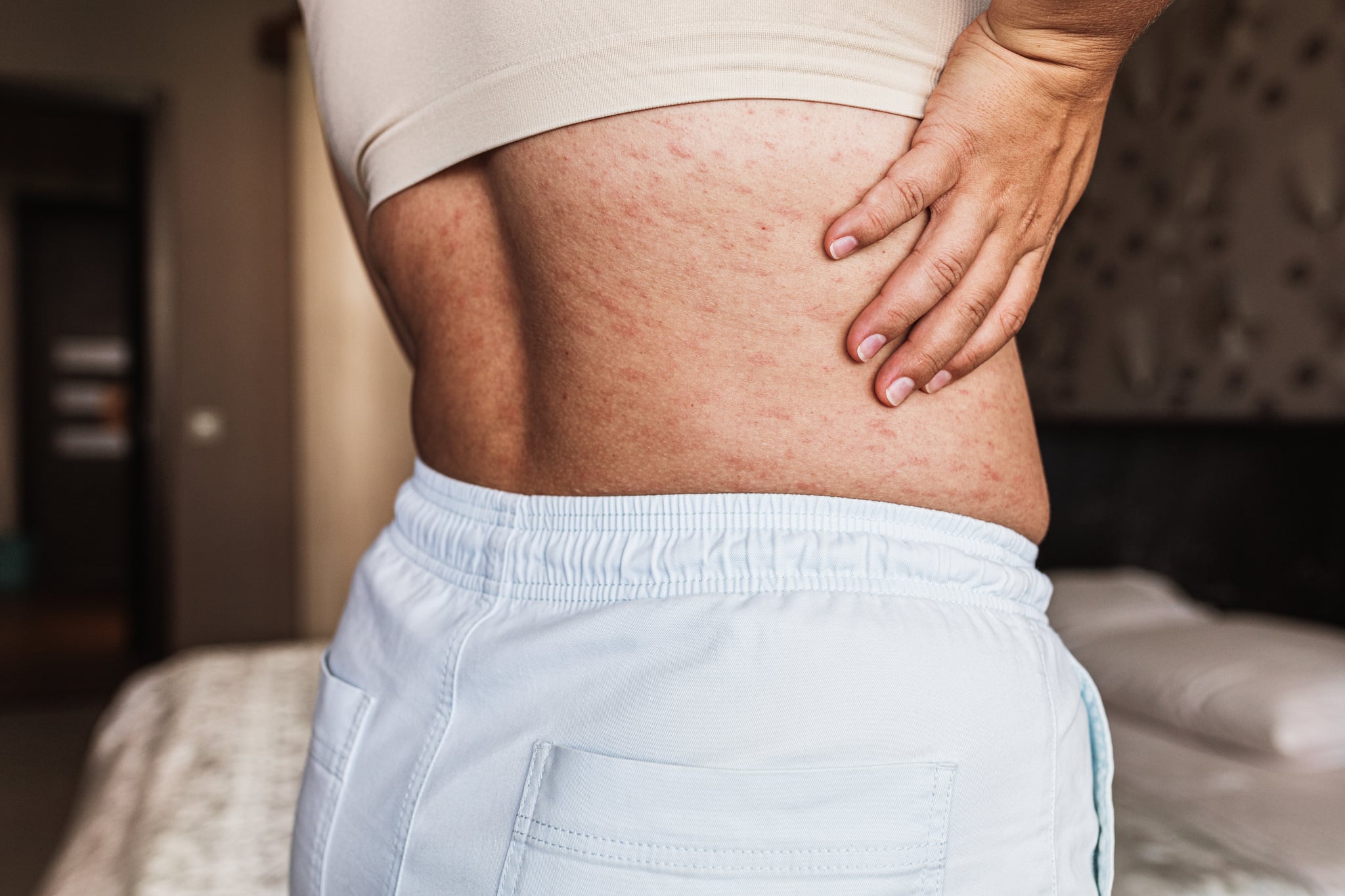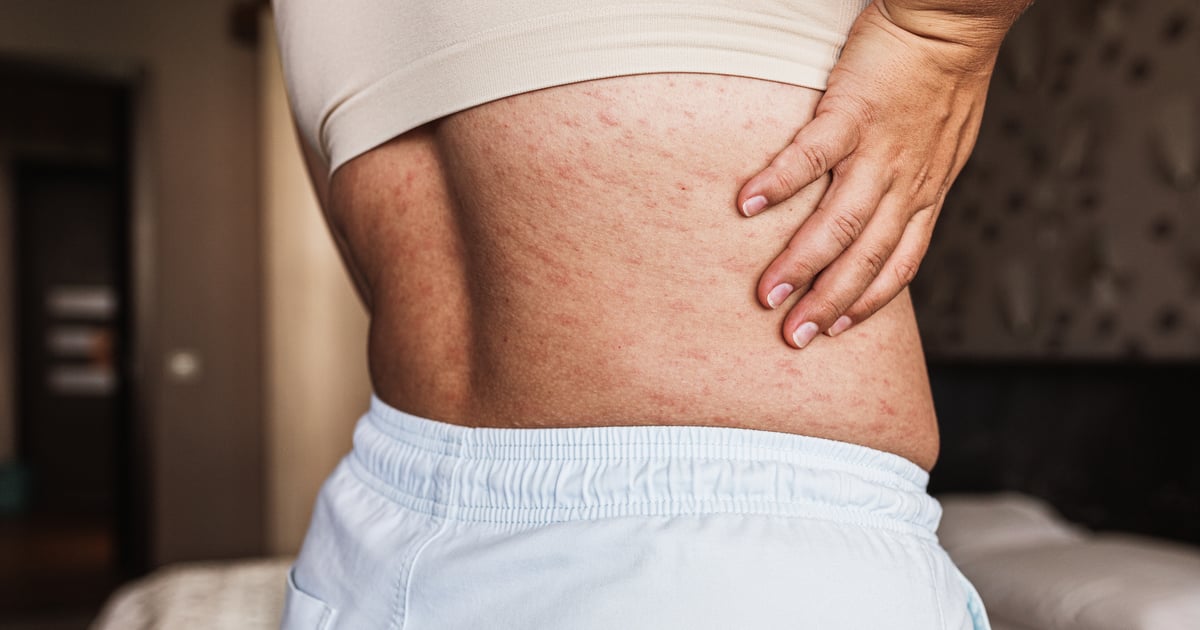
If you’re on the skin-care side of TikTok, you may have seen videos about topical steroid withdrawal, or TSW, come across your FYP. TSW is a rare side effect that occurs when someone stops using topical steroids after prolonged use. Many people who experience the reaction describe some pretty serious symptoms.
The condition can show up as stinging, burning, flaking, peeling, redness, wrinkling, dry, and cracked skin. Whitney Bowe, board-certified dermatologist and founder of Dr. Whitney Bowe Beauty, reposted a video of a woman who showed how topical steroid withdrawal completely changed her life. Dr. Bowe further explained that it can take you to a pretty dark place, and may also result in hair loss, insomnia, and severe depression.
But what exactly is topical steroid withdrawal? Ahead, a dermatologist explains more about the reaction, what causes it, treatment options, and how to avoid it.
Experts Featured in This Article
Kseniya Kobets, MD, is a dermatologist based in Westchester, NY.
What Are Topical Steroid Creams?
Topical steroid creams are short for topical corticosteroids. They play a pretty large role in treating many dermatologic conditions. Dermatologist Kseniya Kobets says they are “topical creams applied externally to skin or scalp that can have calming and anti-inflammatory effects in skin conditions like eczema, psoriasis, and/or autoimmune disorders.”
They’re FDA-approved and made to mimic the effects of naturally produced hormones in the body and for inflammatory presentations of dermatologic conditions. The cream is applied to the region affected by a skin condition that will benefit from it, hydrating the skin and increasing absorption.
According to this study from the National Library of Medicine on topical corticosteroids, topical steroid creams can be administered in a few different ways.
- Ointments: These are usually more potent and used for thick hyper-keratotic lesions. They shouldn’t be used on the areas of your body where there is hair, as it can lead to folliculitis — when your hair follicles become inflamed.
- Creams: Topical steroids in the cream form are less potent than ointments and are usually the type people go for as they don’t leave a residue. They’re used for exudative inflammation and dermatitis.
- Lotions: These usually have a greasier formula. However, they work better in areas of your body that have hair.
- Gels: Gel formulas are also greasy, but they are great options to use on the scalp because they don’t lead to mating.
- Foams: These are a little more expensive than other options, but they’re highly effective on the scalp area.
What Is Topical Steroid Cream Withdrawal?
Topical steroid cream withdrawal is a relatively newly described condition manifested by skin redness, itching, burning, pain, and possible associated psychological symptoms of distress. Dr. Kobets says this can occur “within days after stopping a strong topical steroid after chronic use, but can have continued manifestations months or even years after stopping.”
Some other symptoms of TSW can include: laking, shedding, peeling, or spreading of the skin; swelling, wrinkling and thin skin; pain; insomnia; hair loss; shivering; and fatigue.
So far, there isn’t much research about TSW, and there are no clear criteria for diagnosing it. However, it’s been more common in adult women who use mid to high potency topical creams on the face or genital area, per the National Eczema Association.
What Causes Topical Steroid Withdraw?
Abruptly stopping the use of potent topical steroids after using them for a long time can result in rebound vasodilation — vessels that are used to being constricted are now expanded. Dr. Kobets says this can result in rebound inflammation since the steroids are no longer suppressing the inflammation in the skin, which is used to having topical steroids.
How to Avoid Topical Steroid Withdraw
“Patients need to be educated on using topical steroids judiciously, by not using them continuously, and need to be taking breaks,” Dr. Kobets says. This could look like giving the skin a break for a few days or even up to a week before using them. “Also, many people use topical steroids to fix their symptoms and do not adjust their lifestyle by incorporating frequent moisturizers, hydrating, and hypoallergenic cleansers, and trigger avoidances to their skin condition.”
Treatment Options For Topical Steroid Withdraw
Dr. Kobets says that one way to avoid TSW syndrome is to gradually wean off the topical steroid. “There is also a potential psychological component that is involved in this entity, so referral and involvement of multidisciplinary approach with a therapist or psychologist may be helpful if the problem persists or worsens.”
If you’re currently using or considering a topical steroid and are concerned about TSW, consult with your doctor to learn the best ways to avoid experiencing any of these side effects.
Sydney Wingfield has been a freelance writer in the beauty and wellness space for six years. She has written for Women’s Health, Marie Claire, Glamour, and other publications and loves to cover all things skin care, makeup, and hair.

